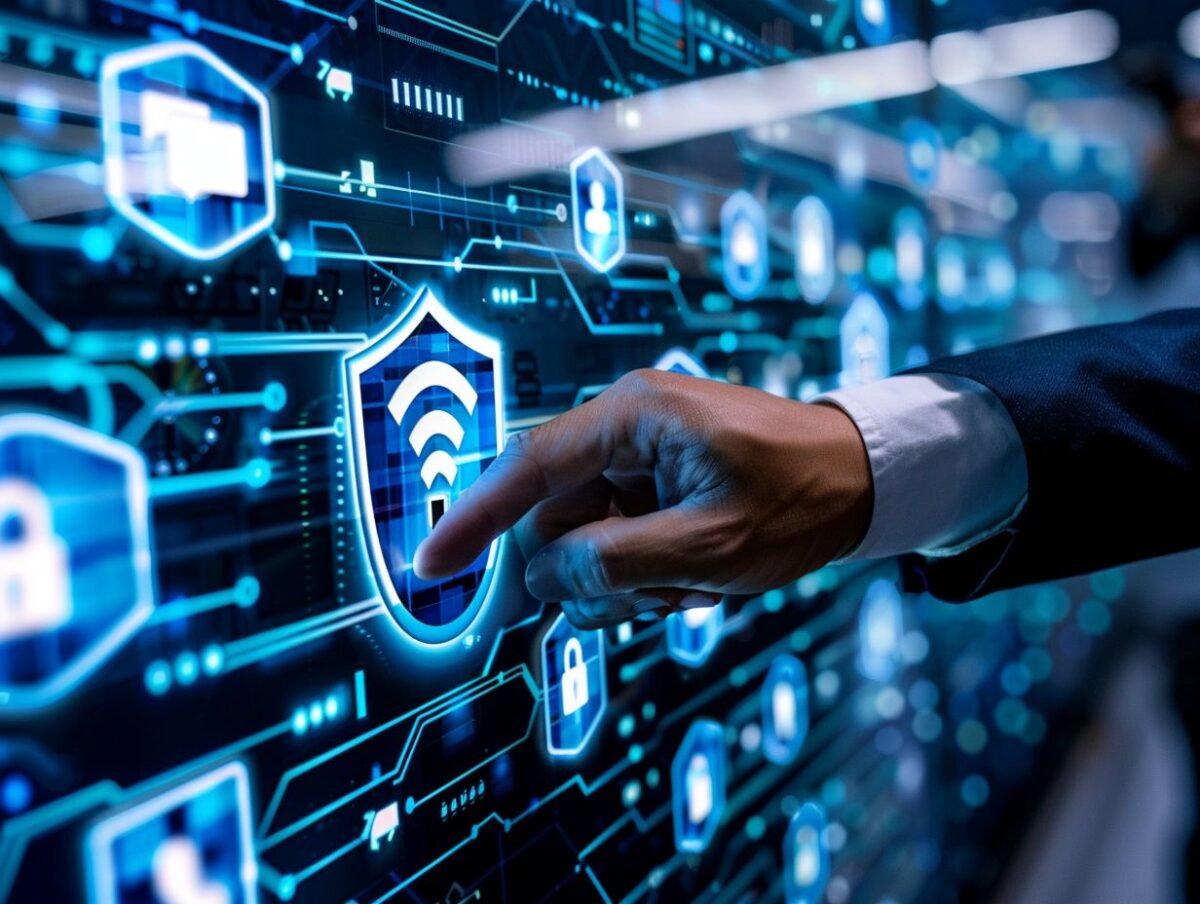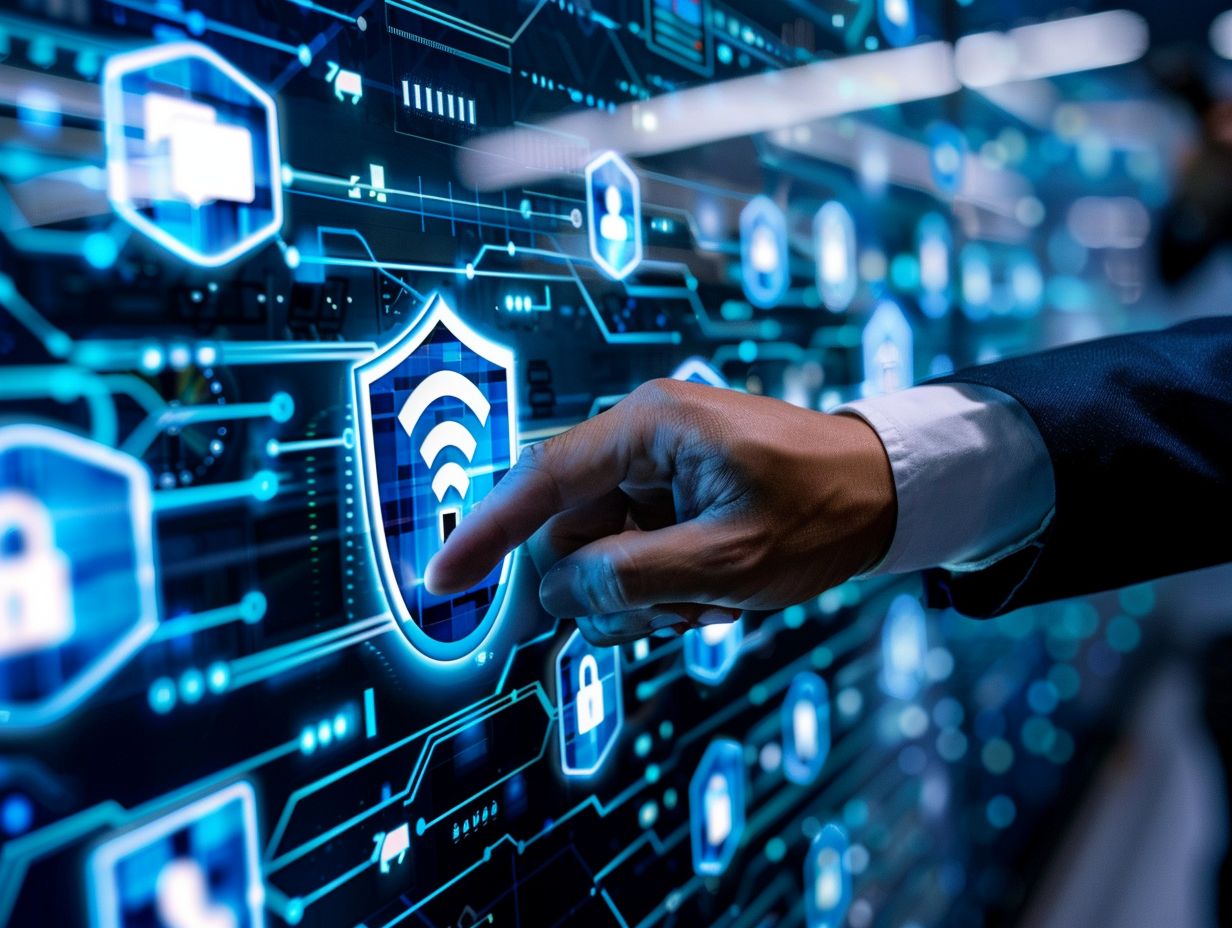Best Practices for Implementing SIEM Solutions in Enterprises

Cybersecurity should be a top priority for your enterprise. One powerful tool that organizations like yours are increasingly relying on is Security Information and Event Management (SIEM). This article will delve into the key features of SIEM solutions, their essential components, and the benefits that come with implementing SIEM in your organization. Additionally, we will cover important factors you should consider before implementing SIEM, steps necessary for successful execution, and the challenges you may face and need to overcome. Join us as we explore the world of SIEM solutions and the best practices for their successful implementation within enterprises like yours.
Key Takeaways:

- Implementing SIEM solutions is crucial for enterprises to improve security and compliance.
- Before implementation, organizations must assess their needs and available resources.
- Successful implementation of SIEM solutions requires careful consideration and adherence to best practices.
What is SIEM and Why is it Important for Enterprises?
Incorporating SIEM, Security Information and Event Management, into your technology infrastructure is essential. This technology offers real-time analysis of security alerts triggered by network hardware and applications, providing enterprises with the ability to proactively detect and respond to cybersecurity threats and incidents. Implementing SIEM solutions is critical for ensuring compliance with industry regulations. By consolidating data from diverse sources, SIEM enables organizations to obtain a comprehensive understanding of their IT environment, enableing them to pinpoint potential security breaches or irregularities. This functionality allows security teams to promptly investigate suspicious activities, thereby minimizing the repercussions of cyber incidents. SIEM is instrumental in streamlining incident response procedures through the automation of threat detection and the facilitation of swift incident triage. Given the constantly evolving threat landscape, SIEM stands as a foundational component in the array of security tools that organizations employ to protect their digital assets and preserve data integrity.
Key Features of SIEM Solutions
Key features of SIEM solutions include advanced analytics capabilities, as well as artificial intelligence (AI) and machine learning (ML) algorithms for threat detection. These tools also offer real-time monitoring, automated incident response, and intelligence-driven security strategies.
Overview of Essential Components
When considering SIEM solutions, you must focus on key components such as log collection, data normalization from various sources, continuous monitoring of IT systems, scalable architecture, and automation of routine security tasks. Log management is a critical function within SIEM systems that allows for the aggregation, parsing, and storage of logs to provide actionable insights and facilitate threat detection. Data normalization is essential for standardizing diverse data formats, enabling easier analysis and correlation of information to enhance incident response capabilities. Effective monitoring processes involve real-time analysis of security events, alerts, and anomalies across the network. Scalability considerations are crucial to ensure that the SIEM solution can accommodate growing data volumes and evolving organizational needs. Automation is key to improving system performance by reducing response times, enhancing accuracy, and freeing up human resources for more strategic security tasks.
Benefits of Implementing SIEM Solutions
 By implementing SIEM solutions, your organization can experience an enhanced security posture, improved compliance adherence, optimized IT infrastructure performance, and proactive threat detection capabilities.
By implementing SIEM solutions, your organization can experience an enhanced security posture, improved compliance adherence, optimized IT infrastructure performance, and proactive threat detection capabilities.
Improving Security and Compliance
SIEM solutions play a crucial role in improving security and compliance within organizations by delivering real-time threat detection, rapid incident response, data protection, and adherence to regulatory requirements. These solutions aid organizations in monitoring and analyzing security events, network traffic, and user behavior to detect potential threats before they escalate. By correlating data from multiple sources, SIEM platforms facilitate the early identification of suspicious activities and support a proactive cybersecurity approach. Centralizing security data and optimizing incident response workflows, these tools notably reduce the time required to investigate and contain security incidents. Additionally, SIEM tools help organizations maintain audit trails and generate compliance reports to fulfill regulatory standards, thereby ensuring a strong security stance enterprise-wide.
Factors to Consider Before Implementing SIEM Solutions
Before implementing SIEM solutions, your organization should consider factors such as your existing technology infrastructure, organizational readiness, alignment with best practices, strategic objectives, and scalability requirements.
Assessing Organizational Needs and Resources
Before implementing SIEM solutions, it is crucial for you to assess your organizational needs and available resources. This evaluation is necessary to ensure the successful deployment of SIEM systems, alignment with business objectives, and efficient utilization of technology investments. Understanding your organization’s specific requirements and available resources is key to seamlessly integrating SIEM systems. By conducting a thorough assessment of your existing capabilities and technological infrastructure, you can strategically align your security measures to effectively combat cyber threats and potential risks. Taking a proactive approach in evaluating organizational needs and resource availability not only optimizes resource allocation but also enhances the overall security posture of your organization. To leverage the full potential of SIEM solutions, a detailed assessment of your needs and resource availability is essential in creating a robust security framework that can adapt to evolving cybersecurity challenges.
Steps for Successful Implementation of SIEM Solutions
 Achieving success in implementing SIEM solutions requires conducting a comprehensive risk assessment, defining clear implementation objectives, carefully selecting suitable vendors, addressing integration challenges, and utilizing automation to streamline deployment processes.
Achieving success in implementing SIEM solutions requires conducting a comprehensive risk assessment, defining clear implementation objectives, carefully selecting suitable vendors, addressing integration challenges, and utilizing automation to streamline deployment processes.
Key Considerations and Best Practices
When implementing a Security Information and Event Management (SIEM) system, it is crucial to consider key factors and adhere to best practices. These include:
- Defining clear security objectives
- Aligning technology initiatives with business objectives
- Establishing robust incident response protocols
- Conducting routine system audits
- Promoting a culture of cybersecurity awareness
To effectively align technological strategies with overarching business goals, organizations must ensure that security objectives are clearly delineated. Incident response protocols should be structured to respond promptly and effectively to potential threats. Regular system audits are essential for continuously monitoring and assessing the efficacy of existing security measures. Furthermore, fostering a culture of cybersecurity awareness among employees is vital for combating insider threats and improving overall security resilience.
Challenges and Solutions for SIEM Implementation
In SIEM implementation, you may encounter challenges such as data overload, complex system integrations, performance bottlenecks, and infrastructure limitations. Solutions to these challenges include optimizing data handling processes, streamlining integrations, enhancing system performance, and scaling infrastructure to adapt to the changing security requirements.
Addressing Common Roadblocks
Addressing common roadblocks in SIEM implementation requires you to develop a robust incident response strategy, leverage artificial intelligence (AI) for threat analysis, enhance system scalability, and foster a proactive security culture within your organization. One effective approach to navigating challenges in SIEM deployment is to prioritize incident handling by establishing clear protocols for identifying, containing, and eradicating threats swiftly. By incorporating successful SIEM implementations in Industry AI tools for automated threat detection and response, your organization can significantly improve its ability to detect anomalies and respond to security incidents in real-time. Scalability enhancements play a crucial role in accommodating the expanding data volumes and complexity of cyber threats. Promoting a security-focused mindset among employees through regular training and awareness programs further reinforces your organization’s defense against evolving cybersecurity risks.
Frequently Asked Questions

What are the best practices for implementing SIEM solutions in enterprises?
1. Identify your organization’s unique security needs and requirements before selecting a SIEM solution. This will ensure that the solution meets your specific needs and is tailored to your environment.
How do I choose the right SIEM solution for my enterprise?
2. Conduct thorough research on various SIEM solutions and compare their features, capabilities, and pricing. It’s important to choose a solution that not only meets your current needs but also has room for scalability in the future.
What factors should I consider when implementing a SIEM solution?
3. Consider the size and complexity of your network, the number of devices and endpoints you need to monitor, and the type of data you want to collect. This will help you determine the right SIEM solution for your enterprise.
Should I opt for a cloud-based or on-premises SIEM solution?
4. It depends on your organization’s needs and preferences. While a cloud-based solution offers scalability and flexibility, an on-premises solution provides more control and customization options. Evaluate both options and choose the one that best fits your requirements.
What are some key features to look for in a SIEM solution?
5. Some important features to consider are real-time monitoring and alerting, threat intelligence integration, advanced analytics and reporting, and user-friendly dashboards. These features will help you effectively detect, respond to, and mitigate potential threats in your environment.
How can I ensure a successful implementation of a SIEM solution in my enterprise?
6. It’s important to involve all relevant stakeholders in the implementation process and ensure proper training for your team. Regular monitoring, fine-tuning, and updating of the solution are also crucial for its success. Additionally, seeking guidance from experienced security professionals can help you avoid common pitfalls and maximize the effectiveness of your SIEM solution.









